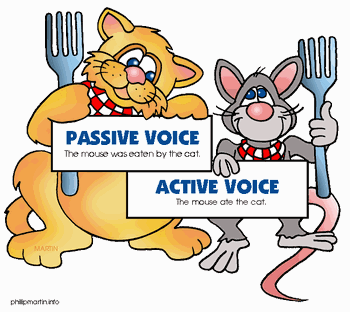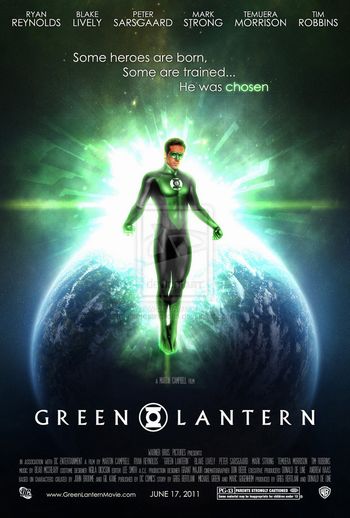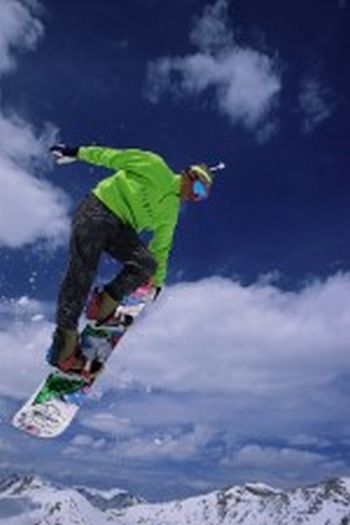17/10/2013
Eliana Dias e Lazuíta Goretti de Oliveira
| Modalidade / Nível de Ensino | Componente Curricular | Tema |
|---|---|---|
| Ensino Médio | Língua Estrangeira | Produção escrita |
| Ensino Médio | Língua Estrangeira | Produção oral |
| Ensino Médio | Língua Estrangeira | Compreensão leitora |
O que o aluno poderá aprender com esta aula
Reconhecer e usar a Passive Voice em diversas situações comunicativas.
Duração das atividades
Conhecimentos prévios trabalhados pelo professor com o aluno
Noções básicas da estrutura da língua inglesa, como verbos, substantivos, pronomes.
Estratégias e recursos da aula
- uso de recursos multimídia;
- uso de fotos, imagens e recursos visuais;
- uso de atividades xerocopiadas;
- uso de textos e atividades retroprojetados;
- realização de atividades em pares e individuais.

Atividade 1
Professor, inicie a aula no laboratório de informática, mostrando aos alunos o pôster seguinte. Como contextualização, pergunte a eles qual gênero o filme "Lanterna Verde" pertence e se algum deles já assistiu ao filme ou sabe alguma curiosidade ou informação sobre ele.

Fonte: http://interestingjohn.deviantart.com/art/Green-Lantern-Poster-Concept-157520704 Acesso em: 06.10.2013.
Atividade 2
Após a observação do pôster, solicite aos alunos que observem os seus dizeres. Se achar conveniente, você pode reescrever os dizeres do pôster no quadro, garantindo aos alunos uma melhor visualização e leitura das frases, como abaixo:
SOME HEROES ARE BORN.
SOME ARE TRAINED.
HE WAS CHOSEN.
Peça para que leiam as frases do pôster e respondam:
a) Can you tell who trained a heroe/some heroes? (Answer: no)
b) Can you tell who chose Green Lantern? (Answer: no)
A seguir, peça que identifiquem os verbos das frases, sublinhando-os:
are born; are trained; was chosen
Explique que os verbos, nas três sentenças, estão na voz passiva, o que significa dizer que o foco é na ação, ou ainda, o agente não é importante para o sentido da frase ou não é conhecido, como nos exemplos retirados do pôster.
Atividades sugeridas no livro: MENEZES, Vera. (2012). Alive! inglês, 9 ano. São Paulo: Edições SM.
Atividade 3
Professor, dando continuidade à atividade anterior, projete a seguinte explicação no data show. Peça para que os alunos se revesem na leitura do texto abaixo.
Passive Voice
Use of Passive
Passive voice is used when the focus is on the action. It is not important or not known, however, who or what is performing the action.
Example: My bike was stolen.
In the example above, the focus is on the fact that my bike was stolen. I do not know, however, who did it.
Sometimes a statement in passive is more polite than active voice, as the following example shows:
Example: A mistake was made.
In this case, I focus on the fact that a mistake was made, but I do not blame anyone (e.g. You have made a mistake.).
Form of Passive
Subject + finite form of to be + Past Participle (3rd column of irregular verbs)
Example: A letter was written.
When rewriting active sentences in passive voice, note the following:
§ the object of the active sentence becomes the subject of the passive sentence
§ the finite form of the verb is changed (to be + past participle)
§ the subject of the active sentence becomes the object of the passive sentence (or is dropped)
Examples of Passive
| Tense |
Subject |
Verb |
Object |
|
| Simple Present |
Active: |
Rita |
writes |
a letter. |
| Passive: |
A letter |
is written |
by Rita. |
|
| Simple Past |
Active: |
Rita |
wrote |
a letter. |
| Passive: |
A letter |
was written |
by Rita. |
|
| Present Perfect |
Active: |
Rita |
has written |
a letter. |
| Passive: |
A letter |
has been written |
by Rita. |
|
| Future I |
Active: |
Rita |
will write |
a letter. |
| Passive: |
A letter |
will be written |
by Rita. |
|
| Hilfsverben |
Active: |
Rita |
can write |
a letter. |
| Passive: |
A letter |
can be written |
by Rita. |
|
Examples of Passive
| Tense |
Subject |
Verb |
Object |
|
| Present Progressive |
Active: |
Rita |
is writing |
a letter. |
| Passive: |
A letter |
is being written |
by Rita. |
|
| Past Progressive |
Active: |
Rita |
was writing |
a letter. |
| Passive: |
A letter |
was being written |
by Rita. |
|
| Past Perfect |
Active: |
Rita |
had written |
a letter. |
| Passive: |
A letter |
had been written |
by Rita. |
|
| Future II |
Active: |
Rita |
will have written |
a letter. |
| Passive: |
A letter |
will have been written |
by Rita. |
|
| Conditional I |
Active: |
Rita |
would write |
a letter. |
| Passive: |
A letter |
would be written |
by Rita. |
|
| Conditional II |
Active: |
Rita |
would have written |
a letter. |
| Passive: |
A letter |
would have been written |
by Rita. |
|
Passive Sentences with Two Objects
Rewriting an active sentence with two objects in passive voice means that one of the two objects becomes the subject, the other one remains an object. Which object to transform into a subject depends on what you want to put the focus on.
|
|
Subject |
Verb |
Object 1 |
Object 2 |
| Active: |
Rita |
wrote |
a letter |
to me. |
| Passive: |
A letter |
was written |
to me |
by Rita. |
| Passive: |
I |
was written |
a letter |
by Rita. |
As you can see in the examples, adding by Rita does not sound very elegant. That’s why it is usually dropped.
Personal and Impersonal Passive
Personal Passive simply means that the object of the active sentence becomes the subject of the passive sentence. So every verb that needs an object (transitive verb) can form a personal passive.
Example: They build houses. – Houses are built.
Verbs without an object (intransitive verb) normally cannot form a personal passive sentence (as there is no object that can become the subject of the passive sentence). If you want to use an intransitive verb in passive voice, you need an impersonal construction – therefore this passive is called Impersonal Passive.
Example: he says – it is said
Impersonal Passive is not as common in English as in some other languages (e.g. German, Latin). In English, Impersonal Passive is only possible with verbs of perception (e. g. say, think, know).
Example: They say that women live longer than men. – It is said that women live longer than men.
Although Impersonal Passive is possible here, Personal Passive is more common.
Example: They say that women live longer than men. – Women are said to live longer than men.
The subject of the subordinate clause (women) goes to the beginning of the sentence; the verb of perception is put into passive voice. The rest of the sentence is added using an infinitive construction with 'to' (certain auxiliary verbs and that are dropped).
Sometimes the term Personal Passive is used in English lessons if the indirect object of an active sentence is to become the subject of the passive sentence.
Fonte: http://www.ego4u.com/en/cram-up/grammar/passive (Acesso em: 06.10.2013)
Atividade 4
Professor, após a explicação do conteúdo gramatical, entregue o seguinte exercício xerocopiado para os alunos, que poderão realizá-lo em duplas. Para a correção, é importante levar os alunos ao quadro, para que escrevam a resposta, facilitando a correção para os demais colegas. Observe se todos participam da aula, proporcionando um ambiente de cooperação e interação entre o grupo.
MAKING SENTENCES MORE ACTIVE
Change these sentences from passive voice to active voice, Sometimes no change should be made.
1. I was taught by my brother the principles of barbecuing.
___________________________________________
2. My father was given the title by the former head chief.
___________________________________________
3. The house was wrecked by the party and the cat was let loose by the guests.
___________________________________________
4. The house is a mess, the cat is lost, and the car has been stolen by Justin.
___________________________________________
5. Unfortunately, my plan was ruined by Gerald, the building superintendent.
___________________________________________
6. The roof was leaking. It had been leaking all week.
___________________________________________
7. The ball was thrown by Lucy, who had been hiding in the bushes.
___________________________________________
8. Francesca was placed on the first flight to Boston. Her father put her there.
___________________________________________
9. "To be or not to be?" That is the question.
___________________________________________
10. A feast had been created from nothing. I was astounded.
___________________________________________
Answers:
1. My brother taught me the principles of barbecuing.
2. The former head chief gave the title to my father.
3. The party wrecked the house and the guests let the cat loose.
4. The house is a mess, the cat is lost, and Justin has stolen the car.
5. Unfortunately, Gerald, the building superintendent, ruined my plan.
6. No change.
7. Lucy, who had been hiding in the bushes, threw the ball.
8. Francesca's father placed her on the first flight to Boston.
9. No change.
10. A feast had been created from nothing. This astounded me.
Fonte: http://www.englishclub.com/writing/college-application-essays/lf_verbtense.html (Acesso em: 06.10.2013)
Atividade 5
Depois do exercício anterior, distribua o texto seguinte e peça para que os alunos destaquem os verbos que aparecem na voz passiva. O texto poderá ser xerocopiado e entregue aos alunos que o lerão em silêncio. Dispense um tempo de, aproximadamente, 10 minutos para a leitura e realização da atividade. Circule pela sala, ajudando com o vocabulário, quando necessário. Peça para que os alunos realizem uma leitura rápida e não dispensem muito tempo para as palavras desconhecidas. Caso o grupo seja grande e apresente dificuldades com a leitura, a atividade poderá ser realizada em casa e corrigida na aula seguinte.
History of Snowboarding
To say who actually invented the sport of snowboarding would be impossible because people have always loved to slide down a snow-covered hill. Soaring through the snow on some kind of seat or board is nothing new. The ways to enjoy the snow are numerous, and people have devised ways to turn garbage can lids and cardboard into ‘snow boards’ to enjoy an afternoon frolic outdoors. The various ways to glide through snow have become more sophisticated and have evolved into using polished boards or skis in much the same manner as a surfboarder would ride a wave.

There have been many attempts at developing a modern snowboard. In 1965, the ‘Snurfer’ (a word play on ‘snow’ and ‘surfer’) was developed as a child’s toy. Two skis were bound together and a rope was placed at the front end to afford control and stability. Over 500,000 ‘Snurfers’ were sold in 1966 but they were never seen as more than a child's plaything even though organized competitions began to take place. The year 1969 brought a slightly more sophisticated snowboard based on the principles of skiing combined with surfboard styling.
The ‘Flying Yellow Banana’ was developed in 1977. This was nothing more than a plastic shell covered with a top surface like that of a skateboard, but at the time it was considered a major advance in the little known sport of snowboarding. The first national snowboard race was held in the area outside Woodstock and was known as ‘The Suicide Six.’ The race consisted of a steep downhill run called The Face in which the main goal was probably mere survival.
Snowboarding continued to increase in popularity over the next several years. In 1985 the first magazine dedicated specifically to snowboarding hit the news stands with huge success and furthered the popularity of this exciting sport. Hoards of fans began to organize regional events and pretty soon snowboarding events were held in all parts of the world. In the year 1994 snowboarding was finally declared an Olympic event, much to the delight of fans. The not-so-new sport of snowboarding was finally recognized and meant a huge victory for serious snowboarders across the globe.
A collection of snowboarding tricks and stunts was released on video in 1996. Filmed in Alaska, the breathtaking beauty and captivating snowboarding techniques featured in the video exposed snowboarding to a new generation, and by 1998 snowboarding constituted almost 50% of all winter activity. Today, nearly all ski resorts accept snowboarders. There are still a few holding on to the past but this is unlikely to continue as the number of snowboarders continually increases.
From the first crudely built snowboards to the advanced and specialized models available today, snowboarders have carried a‘bad boy’ image. This rebel reputation is still common today in spite of the fact that snowboarding appeals to men, women, and children of all nationalities and social groups. At most major ski resorts you can find snowboarding gear, information, and lessons. Olympic and world wide snowboarding events are among the most popular of winter sports and the competition to be the best is fierce.
Retailers nation wide and around the world carry many types of snowboards, and the choice in specially made snowboarding gear is immense. Snowboarders have participated in the X Games and even charity events such as Boarding for Breast Cancer. From its early meager beginnings snowboarding has progressed into a fully recognized sport, and large numbers of people are turning to snowboarding for adventure, fun, and professional recognition.
Fonte: http://www.ego4u.com/en/read-on/animals/snowboarding?param=&mark=simpapassiv (Acesso em: 06.10.2013)
Recursos Complementares
Para um vídeo sobre o tema, acesse:
http://www.youtube.com/watch?v=57KobCg2_n0 (Acesso em: 06.10.2013)
Para outras explicações sobre Passive Voice:
http://dicasingles.blogspot.com.br/2007/03/passive-voice.html (Acesso em: 06.10.2013);
http://www.brasilescola.com/ingles/passive-voice.htm (Acesso em: 06.10.2013);
http://www.infoescola.com/ingles/voz-passiva-passive-voice/ (Acesso em: 06.10.2013)
Para exercícios, acesse:
http://www.ego4u.com/en/cram-up/grammar/passive (Acesso em: 06.10.2013)
http://www.englishclub.com/grammar/verbs-voice_quiz.htm (Acesso em: 06.10.2013);
http://www.tinyteflteacher.co.uk/learning-english/grammar/exercises/active-passive.html (Acesso em: 06.10.2013)
Para slides sobre o tema:
http://www.slideshare.net/search/slideshow?searchfrom=header&q=passive+voice (Acesso em: 06.10.2013)
Avaliação
Peça aos alunos para que localizem exemplos de voz passiva em manchetes de jornais e revistas de língua inglesa na internet. Os alunos poderão postar os exemplos em um blog e apresentá-los para a classe, ou utilizar-se de um data show para a apresentação. As frases deverão ser lidas para o grupo e os verbos que indicam a voz passiva deverão ser destacados. O professor deverá observar a acuidade com a tarefa, assim como o aprendizado do conteúdo introduzido nesta aula.
Sugestões de sites para pesquisa:
http://news.bbc.co.uk/2/hi/8455629.stm (Acesso em: 06.10.2013)
http://www.nytimes.com/pages/todayspaper/index.html (Acesso em:06.10.2013)
Sem estrelas 0 classificações
- Cinco estrelas 0/0 - 0%
- Quatro estrelas 0/0 - 0%
- Três estrelas 0/0 - 0%
- Duas estrelas 0/0 - 0%
- Uma estrela 0/0 - 0%
Denuncie opiniões ou materiais indevidos!
- Sugestão de aula
- Aulas
- Coleções de aulas
- Criar aula
- Criar individual
- Criar em equipe
- Gerenciar equipes
- Minhas aulas
- Orientações
- Criando equipes
- Dicas para a produção de aulas
- Reflexões pedagógicas
- Utilizando a ferramenta
- Artigo: portal educacional
- Estatísticas de uso do Portal
- Estatísticas de aulas
- Estatísticas de recursos
- Estatísticas de visitas
- Recursos utilizados em aulas
- Reflexões pedagógicas
- Informações de cursos
- Cursos
- e-Proinfo
- Materiais de cursos
- Materiais de estudo
- Artigos e publicações
- Assuntos relevantes
- Avaliações
- Ciência do cotidiano
- Destaques internacionais
- Dicas práticas
- Educação profissional e tecnológica
- Entrevistas
- Estratégias pedagógicas
- Inovações tecnológicas
- Materiais de cursos
- Materiais de evento
- Orientações e diretrizes
- Parâmetros e referencias
- Programas em vídeos
- Tutoriais
- TVescola
- Ferramentas do portal
- Fórum
- Portal do Youtube
- Compartilhando apresentação
- Ferramentas pela internet
- Blog
- Compartilhe vídeos
- Comunicação on-line
- Crie e compartilhe apresentações
- Edite e compartilhe fotos
- Escrita colaborativa
- Junte-se a uma comunicade
- Lista de discussão
- Organize e compartilhe favoritos
- Podcast
- Rádio/TVs Universitárias e outros
- Redes Sociais
- Robô Ed
PLATAFORMA FREIRE
- Bibliotecas
- Capacitação Proinfo Integrado
- Cultura
- Dicionários, tradutores e enciclopédias
- Educação inclusiva
- Geoprocessamentos
- Inclusão digital
- Infográficos
- Jogos educativos
- Jornais
- Museus
- Observatórios e planetários
- Organizações governamentais
- Plataformas educacionais
- Portais educacionais e outros
- Portal MEC
- Prêmio professores do Brasil
- Produções de professores
- Projetos de escolas
- Projetos inovadores
- Projetos sociais e educacionais
- Rádio escola
- Recursos digitais
- Revistas
- Sites de busca
- Sites temáticos do portal e TVescola
- Softwares de edição e outros
- Softwares educacionais
- Um computador por aluno

- Ryan Oksenhorn
- Ryan Snow
- Sergio Caldara
- Shane Miler
- Shane Herzog
- Sotirios Papavasilopoulos
- Stephen JB Thomas
- Tarah
- Valera Nazarov
- ZbigniewMa K Flakus


